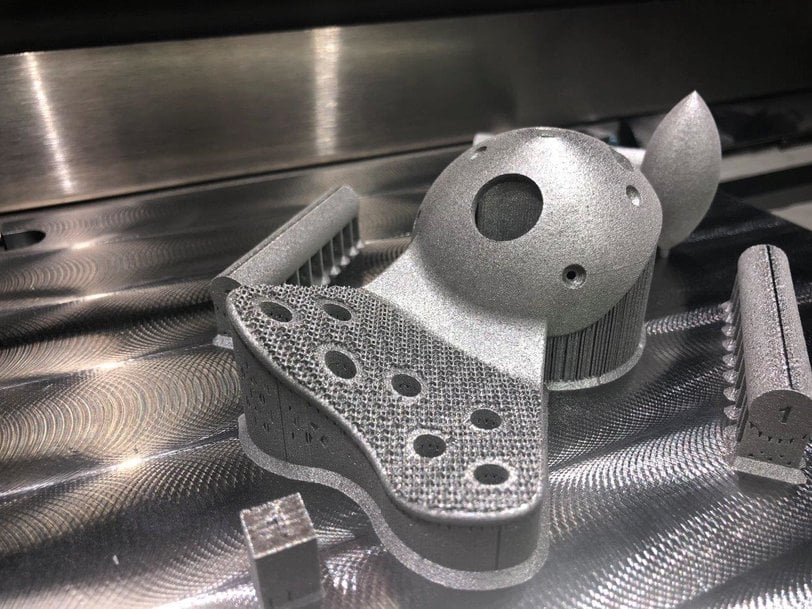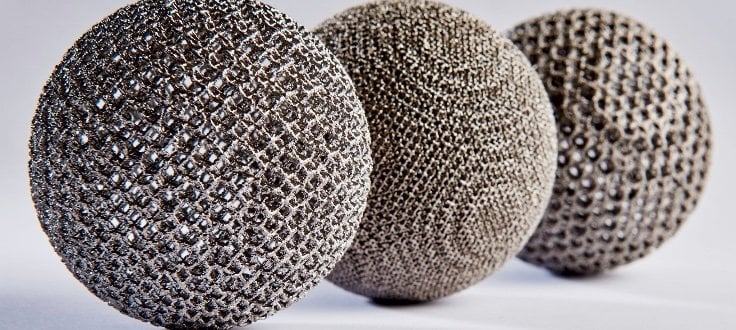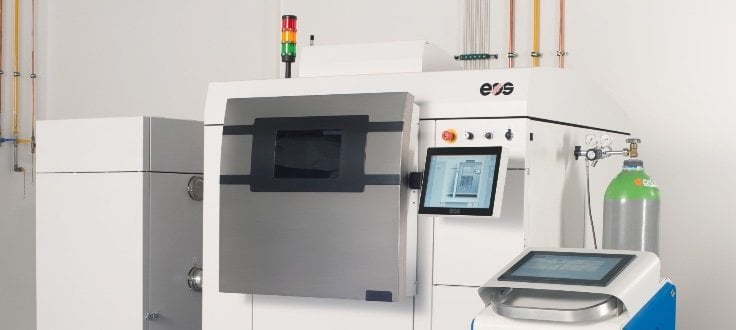www.magazine-industry-usa.com
08
'21
Written on Modified on
Additive manufacturing and medical devices: extraordinary possibilities
Once thought destined mainly for prototyping, additive manufacturing is now increasingly employed in the development of spare parts, small series production and tooling.

Among industries at the forefront of innovative manufacturing, the medical sector has emerged as a major segment driving the growth of additive manufacturing. Additive manufacturing and medical devices: extraordinary possibilities.
Personalization: the game changer for medical devices
The use of additive manufacturing in the development of medical devices is unlocking extraordinary possibilities in terms of customizing implants, prosthetics, tools and other devices to the specific dimensions and needs of the patient. It not only represents a technology leap to improve medical care, but also has the potential to significantly reduce healthcare costs. The time patients need to spend under post-operative physician care can be reduced as well as the need for corrective or additional surgeries. Additionally, the change from mass manufacturing to “on-demand” manufacturing is likely to result in reduced consumption of resources such as raw materials and energy. And with the knowledge gained from its use in rapid prototyping, additive manufacturing can offer considerably reduced product development time. Learn more about gases for additive manufacturing.
In contrast to the one-size-fits-all approach which has generally been the standard procedure until recently, additive manufacturing can produce components based on highly individual and complex lattice structures more efficiently than by traditional subtractive machining. Such multifaceted components aim to mimic human body parts which can better assimilate into the patient’s own bone and tissue structure, leading to fewer rejections and quicker healing times. It can also create quite specific and distinctive surface finishes which can enhance the success rates of surgical procedures.
Due to the immense advantages this technology presents to the healthcare industry, the global market for additive manufacturing of medical devices is anticipated to grow at a CAGR of around 17% between 2019 to 2026.[1]
A far-reaching value chain
Implants need to be designed specifically to a patient’s magnetic resonance imaging (MRI) or computed tomography (CT) scans, so involve medical experts to undertake initial investigative procedures, body imaging and patient consultation. The design of a virtual model must then be created using software and 3D scanners by specialist CAD designers. Once designs are approved by the surgeon, actual manufacturing can begin.
Various additive manufacturing technologies ranging from laser powder-bed fusion and laser directed energy deposition to binder jetting are used to build the component layer by layer, with the device undergoing a number of quality control processes – including post-printing cleaning, validation, testing and verification – before they are sterilized, packaged and delivered to hospitals, orthopedic clinics and rehabilitation centers.

The vital role of gases
Atmospheric gases play a fundamental role across each stage of the additive manufacturing process – from metal powder production and storage to enhancing the printing process and post-printing cleaning.
The mechanical properties of a finished product are not only highly dependent upon the printing process itself, but the characteristics of the powder used in the process. The quality of metal powders used in additive manufacturing is critically important as it can impact on the physical properties of the finished product.
"The quality of metal powders used in additive manufacturing is critically important"
Gas atomization is the most effective approach to metal powder production due to the superior geometrical properties achieved. It requires not only a large supply of inert gases such as argon and nitrogen, but the gas molecule expertise to help manufacturers fine tune the atomization process to further improve powder characteristics, eliminate rejects – and to do so cost effectively.
Once the metal powders have been produced, it is essential to maintain the correct atmosphere during their storage in order to avoid humidity. The quality of metal powder has fundamental impact on the microstructure and physical properties of the printed item, so they must be of a defined and consistent quality, meaning that correct storage and handling is vital. Humidity will age the powder, reduce its flowability and will increase the amount of oxygen during printing.
Linde has developed an innovative solution to resolving this storage challenge – the ADDvance® powder cabinet. The powder cabinet works with a moisture control and monitoring unit to continuously measure humidity levels, triggering a high-volume purge gas flow as soon as the doors are closed to rapidly remove moisture in the air. It then applies a lower stream of gas to ensure a consistently low level of humidity, ensuring the quality of the valuable, sensitive metal powders is retained.

ADDvance® O2 precision – provides continuous analysis of the gas atmosphere, detecting oxygen levels with high precision without cross-sensitivity.
The essential element – atmospheric gases
Beyond metal powder and storage optimization, atmospheric gases play an even more important role in the core printing process.
Although the atmosphere in the chamber is purged with high-purity inert gases such as argon and nitrogen to rid it of oxygen, impurities can still remain present due to incomplete purging, via loose connections or even within the metal powder itself. Even extremely small variations in oxygen content can impair the mechanical or chemical properties of metals sensitive to oxygen – such as titanium and aluminum alloys – and can affect the composition of the end product resulting in negative physical characteristics such as discoloration and even poor fatigue resistance.
"Even extremely small variations in oxygen content can impair the mechanical or chemical properties of metals"
Linde has dedicated the past few years to developing pioneering technology to overcome these atmospheric impurities in order to give manufacturers optimal printing conditions. The result – ADDvance® O2 precision – provides continuous analysis of the gas atmosphere, detecting oxygen levels with high precision without cross-sensitivity. Recognizing O2 concentrations as low as 10 parts per million (ppm), the unit automatically initiates a purging process to maintain the atmosphere as pure as needed. The technology is already in use at medical device manufacturing companies at the vanguard of additive manufacturing, including 3D Medlab in France.
www.linde.com

